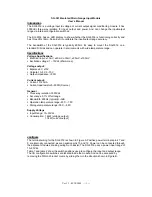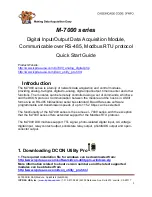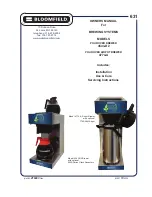
6 Patient Transfer
6.1 General safety information
WARNING!
Risk of Injury or Damage
Improper use of this product may cause injury
or damage.
– Before transferring to a stationary object
(wheelchair, bed, commode or other surface)
check that its weight capacity can withstand
the patient’s weight.
– If applicable the brakes of the stationary object
(wheelchair, bed etc.) must be applied before
lowering the patient onto or lifting the patient
off.
– When using the lift in conjunction with beds or
wheelchairs, be aware of the position of the lift
in relationship to those other devices so that
the lift does not become entangled.
– Before positioning the legs of the patient lift
under a bed, make sure that the area is clear
of any obstructions.
WARNING!
Risk of Injury or Damage
Improper use of this product may cause injury
or damage.
– Use the push bars on the mast at all times to
push or pull the lift.
– Avoid using the lift on an incline. Invacare
recommends that the product only be used on
a flat surface.
– During transfer, with the patient suspended in
a sling attached to the lift, do not roll lift over
uneven surfaces that could cause the lift to tip
over.
– During transfer, with the patient suspended in
a sling keep the legs at the maximum open
position for optimum stability. If it becomes
necessary to move through a narrow passage,
close the legs only as long as required and
return to maximum open position as soon as
possible.
WARNING!
Risk of Injury or Damage
Damage to parts of the lift (hand control, castors,
etc.) caused by impact with the floor, walls or
other stationary objects may cause damage to
the product and lead to injury.
– Do not allow parts of the lift to impact the
floor, walls or other stationary objects.
– Always store the hand control properly when
not in use.
WARNING!
Risk of Injury
Injury to the patient and/or assistant may occur
– Always be aware of the position of the lifting
arm and the patient.
– Always be aware of the position of the foot
plate, especially the patient's position on the
foot plate.
– Before positioning the legs of the lift around
the patient, make sure that the patient's feet
are out of the way of the foot plate.
– Always ensure that the foot plate and/or
patient's feet are dry before performing a
transfer.
WARNING!
Risk of Entrapment or Strangulation
The hand control cord can cause injury if
improperly positioned and secured.
– Always be aware of the location of the hand
control cord in relation to the patient and
caregivers.
– Do not allow the hand control cord to become
entangled around the patient and caregivers.
– The hand control must be secured properly.
ALWAYS store the hand control properly when
not in use.
WARNING!
Risk of Entrapment or Strangulation
Items in the patient’s surroundings can cause
entrapment strangulation during lifting. To avoid
entrapment or strangulation:
– Before lifting, check that the patient is
completely free of his/her surroundings.
WARNING!
Risk of Entrapment
There is a risk of entrapment between the hooks
and the sling.
– Use caution when lifting.
– Never put hands or fingers on or near the
hooks when lifting.
– Ensure the patient’s hands and fingers are away
from the hooks before lifting.
WARNING!
Risk of injury
Injury to the patient and/or assistant may occur:
– If lifting arm and/or leg support is not adjusted
correctly to the patient height.
– If the lifting arm adjustment is not locked,
damaged or with worn parts.
IMPORTANT!
All transfer procedures described in the following
can be performed by one (1) assistant. However,
Invacare recommends that the procedures are
performed by two (2) assistants whenever
possible.
Only lift the patient as high as required. A lower
center of gravity provides better stability, makes the
patient feel more secure and the lift easier to move.
60127405-A
19
Содержание ISA COMPACT
Страница 34: ...Notes ...
Страница 35: ...Notes ...















































